Paper txt msgs from Kashmir
by Alana_Hunt
Files
This work has been commented by 9 curator(s). Read the comments
Title
Paper txt msgs from Kashmir
Headline
A tactical media project from the most densely militarised place in the world
Concept author(s)
Alana Hunt
Concept author year(s) of birth
1984
Concept author(s) contribution
Alana Hunt conceived of and initiated this project, which would not have come into being without the participation and assistance of many people from Kashmir including: Suvaid, Suhail, Fayaz, Tanveer, Mubaishra, Irshad, Ishtiyaq, Majid and Riyaz. Many warm thanks.
Concept author(s) Country
Australia
Friendly Competition
Love Conflict Imagination (2010-2011)
Competition category
Visual communication practice
Competition subcategory
static
Competition field
nonacademic
Competition subfield
artist
Subfield description
As a practitioner I seek to move towards broader ways of thinking about and engaging with the relationship between art, culture, politics and society, through intimate, poetic and relevant means. The social environment is a core material of my work, which draws upon a range of conceptual and participatory artistic traditions while also exploring and intersecting with disciplines traditionally perceived as being disparate from art. While my projects move across an array of on and offline media, performance, video, installation, printed matter, text and curation, it is the social transactions that take place around and through my work that give flesh to the bones of my ideas. It is in this sense that I view my work not so much as a producer of art-objects but rather as a catalyst of culturally charged processes and encounters. I work towards creating projects that: INCITE SEEK DREAM INVITE CHEW SWALLOW CHUCKLE WISH ERODE DISRUPT UNCOVER IMAGINE WANDER SEEP RUN MUMBLE STAMMER WHISPER CRY REFRAME DIG GROW ALLUDE DISCUSS CHALLENGE COMFORT SIMMER PROVOKE RELIEVE EXCHANGE DISPLACE HIGHLIGHT QUESTION RUMINATE RECORD INFUSE GIVE I have a deep ambivalence towards modernity, which feeds my interest in the contemporary legacies of colonialism, the affects of nation-making and the shifting dynamics of post-industrial society. Largely influenced by time spent living in Sydney, Oahu, Halifax and New Delhi it is these themes that provide a certain contour to the underlying currents of my practice in quiet yet consistent ways. My work has been shown internationally most notably at the National Gallery of Indonesia (2009), the Asia Triennial Manchester 11 (2010), and across the streets and galleries, living rooms and festivals of Sydney, New Delhi, Kashmir, Halifax, Berlin, Jakarta, Manchester and Valencia. My current body of work explores the Kashmir conflict. www.alanahunt.net www.cupsofnunchai.com
Check out the Love Conflict Imagination 2010-2011 outlines of Memefest Friendly competition.
Description of idea
Describe your idea and concept of your work in relation to the festival outlines:
Indian-administered Kashmir is today the most densely militarised place in the world. Living under the military occupation of what is recognised as the world’s largest democracy, Kashmir’s people have been waiting more than 60 years for the right to self-determination. In the last 20 years more than 70,000 people have lost their lives in the conflict. The landscape, though beautiful, is embedded with trauma.
In November 2009, the Indian government cited reasons of security as they imposed a blanket ban on all pre-paid mobile phone connections across the Kashmir region. Virtually over night, more than 400,000 mobile phone users – people conducting business, college students, families, distanced lovers – were left without means of telecommunication and the event passed with little more than a murmur across the Indian media.
Remembering Kashmir from my home in Delhi, I thought of a friend who I lay next to sleeping while she spoke to her boyfriend each night on her mobile; LOVE. I thought of how another friend’s father had called and told us not to come home today because the army had begun firing at stone throwing youth outside their home; CONFLICT. I thought of the feelings of alienation the pre-paid ban would generate, and the way that it made out like all the people in Kashmir using pre-paid mobiles were suspected terrorists and I wondered what could be done: IMAGINATION.
In December 2009 almost 1000 “paper txt msgs” were distributed throughout Kashmir. Through the tongue-in-cheek distribution of an “alternative communicative tool” dejected pre-paid subscribers were invited to write a “paper-txt-msg” to anyone real or imagined, about anything they would like to write in a txt msg but were suddenly unable to do so.
The paper txt msgs moved between people’s hands in different ways and different places, with almost 150 eventually finding their way back to me in New Delhi.
The project generated media coverage and discussion about the pre-paid ban and the paper txt msgs that had been returned from Kashmir have since been included in exhibitions at Sarai in New Delhi and Fraser Studios in Sydney. PAPER TXT MSGS FROM KASHMIR is currently being worked into a website, video and publication project, accompanied by contemporary writing from Kashmir, for wider distribution.
What kind of communication approach do you use?
This was a lo-fi tactical media project, that responded to the Indian state’s ban of pre-paid phone connections with a specially designed and accessible 4x4inch piece of card, otherwise know as a paper txt msg. As a form of tactical media the paper txt msgs functioned as an imaginative, symbolic and functional gesture that highlighted, with a tongue-in-cheek absurdity, what is otherwise a very tragic conflict. While 1000 paper txt msgs were printed and distributed, a pdf also circulated online that allowed people to print out and distribute the paper txt msgs independently.
What are in your opinion concrete benefits to the society because of your communication?
PAPER TXT MSGS FROM KASHMIR benefited society, both within and outside Kashmir, on a number of levels.
- Firstly the project allowed people in Kashmir to feel that someone outside of the region was taking note of the daily affects of the military occupation – that the absurdity of the pre-paid ban was not taking place entirely unnoticed.
- Secondly the paper txt msgs provided a unique, cheeky yet non-violent form of dissent that moved at the grass roots level and allowed Kashmiri people to vent their frustration through a diverse array of loving, sarcastic, angry, sad, insightful, banal, funny and imaginative responses.
- Thirdly within a context where Kashmir has been placed under the wider “war against terror” the public circulation of the 150 paper txt msgs that were returned to me, through exhibitions, online publications and as video helps to breakdown popular perceptions about Kashmir and terrorism, inturn highlighting both the absurdity of the government’s pre-paid ban and creating an alternative communicative tool through which voices from Kashmir can be heard.
What did you personally learn from creating your submitted work?
Far more people are using their pre-paid phone connections in Kashmir for love rather than terror.
Imagination is important in a conflict zone.
As the process of this work unfolded I learnt that people will respond, actively take part and also care for the development of a project when it strikes a chord and offers something useful – even when that usefulness lies in the imaginative or symbolic.
Why is your work, GOOD communication WORK?
PAPER TXT MSGS FROM KASHMIR mobilised widespread participation in what is the most densely militarised place in the world, bypassing the oppressiveness of the government’s pre-paid ban with a cheeky, light hearted and accessible form of communicative dissent.
The absurdity of the projects lo-fi paper form coupled with the individual txt msgs people wrote worked together to create a larger statement against the pre-paid ban that was as personal as it was publicly political.
Where and how do you intent do implement your work?
PAPER TXT MSGS FROM KASHMIR took place as a tactical media intervention from December 2009 – February 2010 in the valley of Kashmir.
After this period 150 paper txt msgs were progressively returned to me in Delhi and later included in exhibitions at Sarai in New Delhi and Fraser Studios in Sydney throughout the latter part of 2010.
Currently the project is being developed into a video and publication project accompanied by contemporary writing from Kashmir for further on and offline distribution.
Did your intervention had an effect on other Media. If yes, describe the effect? (Has other media reported on it- how? Were you able to change other media with your work- how?)
Curators Comments
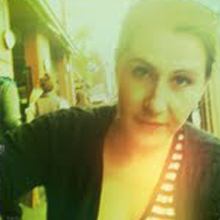
Dr Zoë Sadokierski
This project is a beautiful piece of work, and an exemplar of what radical communication and Memefest is all about – it is playful and delightful, but makes a serious point in a memorable way. I wish more designers would use their capacity for creativity this way.
Reading through the collection of messages is a moving experience, and very much encompasses the theme of this year's festival: the love is obvious in the uniquely handwritten messages between loved ones, the conflict and power come through from the context of the situation and the cries for help and justice. To allow love to emerge through such conflict and abuse of power, with such a simple idea (pen and paper...remember those!) is a truly admirable achievement.
This is by far the stand out project of the festival for me. Congratulations on producing such a moving and powerful piece of work.
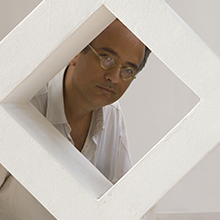
André Vallias
A political and poetic approach demonstrating the power of human creativity over technological restrictions and/or machine fetichism.
The project would have more impact if the web site offered more material and documentation about the experience. Interwiews, testimonies, videos showing the reaction of the people receiving the messages would make it very inspiring for similar projects.
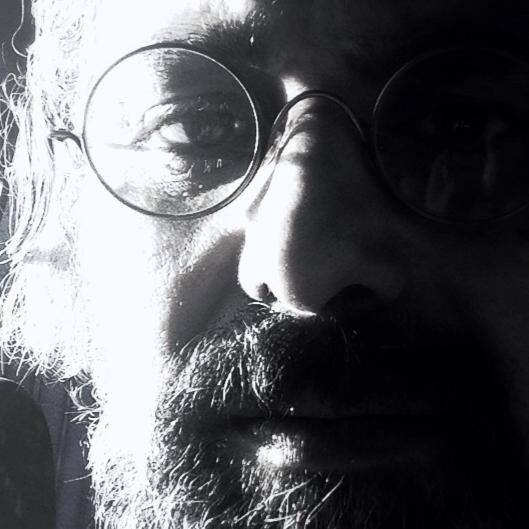
Antonio Rollo
The topics LOVE, CONFLICT and IMAGINATION can lead to a range of interpretations that goes from a personal and private view of this elements (my body, my family) to a wider angle of public and social point (my region, my world). Should be easy to explore LOVE, even if rivers of poetry can be written. Should be a little more difficult to express the meaning of CONFLICT when I live in a comfortable social space. In the western society we forgotten that the present is more recent than we think. The progress made after the invention of electricity follow a crazy line that goes in conflict with the limited space we have on our planet. When this little place (my region) become militarized change the perception of life. The first big thing to face is the lost of imagination on new generation. Paper txt msgs from Kashmir looks like a jump into a near future where new media can be perceived without electricity. It is a paradox? or we are living in a paradox?

Kevin Yuen Kit Lo
This is a powerfully simple project that works on many levels.
First and foremost, I appreciate how it is born out of a specific context and brings to light the important issues surrounding it.
Though the simplicity of the core idea belies the complexity of the issues, it uses/appropriates a specific media channel to create a personal connection within a community, and allows for an openness of expression (and interpretation) in direct opposition to the censorship the original ban sought to enforce.
As a design solution, it is very effective. Identifying a specific problem, and using the simplest means to address it, but with just enough of a metaphoric hook to make it engaging and relevant. An economy of means is employed to create a much larger effect.
If I have one very small criticism, it would be the design of the paper text msgs. I would have liked to see them mimic the cell phone interface a little bit more. But this probably comes from my design "snobism" more than out of any real need.
I would also like to see how the project could be evolved. A website which documents and communicates the messages would be great to see, and perhaps very useful for the people involved. Furthermore, a reinterpretation of the content could be very relevant in order to further expand the reach of the messages and information about the situation generally.
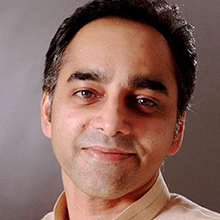
Shoaib Nabi
The simplicity and yet the layers of emotional overtures beckons me to advocate a collection of these messages to the world at large. This is what I feel radical communication stands for and the existence of social sites like Memefest is needed for its promotion.
In this digital age with twitters and sms's, blogs, etc I have to admit the lo-fi tactical media project, that responded to the Indian state’s ban of pre-paid phone connections with a specially designed and accessible 4x4inch piece of card, otherwise know as a paper txt msg is refreshing and gets my attention.
The vernacular remains intact yet on many levels because of the simple fact that you are seeing someone hand written txt msg it connects you to that person and draws you emotionally. The stills from the video footage adds to the variations that one sees in the textures of the messages. I enjoyed these variations because each reflected a unique personality - even how the blank squares were photocopied, juxtaposition and often random endearing terms expressed with such ease is a cause for celebration. SMS's may be band but freedom of expression still lives on in yet another form. Advocates will always find a way out.
The only reservation I had for this project was that it was not conceived for the competition but it fits well unlike many that were done a few years back and tried in vain to adapt to the theme and subject of the competition. I appreciated the very fact that this competition has given this cause a platform to promote itself and will continue and evolve in other mediums. A simple idea with a strong impact!

Tony Credland
I found this project a very human interaction with difficult issues, using simple and effective formats to open up a subject too often ignored. The medium is completely relevant to the situation and critiques the way many designers often use the latest technology, trend, typeface... even when the old ones work better.
An interesting debate seems to have been created with many people engaging enthusiastically to tell their own stories, keen to let a other hear what they have to say. This from people that would probably be kept out of the news due to the way the media opperate in these conflict zones.
My main question would be if the people that participated in the project managed to gain form the experience, as it seems the outcomes were presented in far-away art galleries, in very different circumstances (this may well not be true - just i cant see that side of the project here).
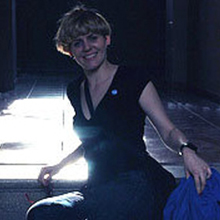
Katarína Lukić Balážiková
Dear Alana,
let me comment your submitted project with few words.
Your project has strong political discourse. The idea behind this project is very strong and visual implementation is very original.
Physical space based activist projects with a bit of guerrilla marketing strategy and tactical media is the right format you could choose for visualizing the topic and issue. Using lo-fi technology, print media and interactivity was the right communication strategy to show the pradox and unlogic of such political conflict.
Good luck in developing this project and hope you will address the right people and attract more attention of political structures in Kashmir.
Roderick Grant
The simplicity of this intervention is beautiful – while ironic to consider the introduction of the lo-fi solution to a technical limitation or ban has an element of humor to it, the degree to which the intervention penetrated the population and became an actual vehicle speaks well to the integrity of this work.
I have little to add to this work critically, I simply wish to express my belief in the work of the authors – this is a meaningful and significant act that will gain formal expression through the extended means of documentation discussed in the description.
Particular attention can, and I have no doubt will, be placed in the contextualization of the received txt messages. While the individual messages may not function as a coherent narrative or series of conversations, the intervention certainly does – at the level of the imagination, and at the level of artistic act.

Sandy Kaltenborn
Dear Alana, Suvaid, Suhail, Fayaz, Tanveer, Mubaishra, Irshad, Ishtiyaq, Majid and Riyaz - thanks for sharing this project with us.
We enjoyed its simple and convincing concept, where people speak in first person with barely no visual interpretation by the designer/artist or so. no typeface/font can simulate the direct handwriting - what one can read between the lines - what images of people emerge by reading handwritten lines. Very nice.
We agree on most of the things you have sketched out in your project description. and it is obvious to us that this is a good project which fulfills the memefest outlines. so we would only like to add a few questions here:
- how do you see the relation between the private (message) and public (exhibition)? how were these cards actually distributed in Kashmir?
- what kind of information was given along beside the info on the cards?
- what kind of people were reached? (this stays a bit abstract in your description
- and also what difficulties might have come along with the distribution). So what happened to the 850 text cards which were not send back? did people "play" with them for themselves? do you know why so many were not send back?
A documentation of the distribution act would have been nice to see - and also to understand what kind of social setting it was placed in, - as we know that 40% of kashmiri people can't read or write.
Why not keep it on the lo-fi level now? …and what is the relation between gaining "cultural capital for the art world" with such a project and the participants?
Comments
14 years, 3 months ago
I've seen other evidence of this- from people creating their own internet through improvising cheap wireless hardware into a kind of backbone using simple materials, to a change in strategy from using expensive applications marketed throughout the world, to writing apps through home-grown programming.
14 years, 3 months ago
congratulations on this inspiring work, its easy to imagine to be put in action way beyond its primary context an aims. It was especially valuable to me to read so carefully articulated description of your work. Thank you!
14 years, 3 months ago
14 years, 3 months ago
14 years, 3 months ago
-most of the people that i have been working with over the last 8 years have been dependent on their local environment. They have great strategies but somehow it stays in the local/regional, or it stays within an academic context which is a bit of a dead end. Obviously there is a need to share and transcend practices.

14 years, 3 months ago
I will try to respond here to some of the ideas and questions that have been posed.
I understand Tony Credland’s hesitation when he asks how the people who participated in the project managed to gain from the experience when it seems the work has been presented in what appear to be “far-away” exhibition contexts. This is an issue common to many forms of participatory practice when it moves into an exhibition context that is outside its point of origin, though this can also have its advantages. To some extent Sandy Kalternborn similarly echoes this concern when he asks about the relationship between the project, its participants and the idea of “cultural capital for the art world”.
While this terrain is complex and always multifaceted, I will try and answer here in the simplest way that I can.
I believe it is equally important for the paper txt msgs from Kashmir to be distributed both inside and outside Kashmir. There is a need for Kashmir’s stories to circulate globally, and also for greater creative and culturally charged exchanges to take place within the region.
As the 2009 decision to implement the pre-paid ban in Kashmir, more or less, emanated from New Delhi the initial exhibition in this city was site-specific. It hoped to, as the paper txt msgs themselves state, ‘create some discussion around the reasons for the recent emergence of paper txt msging’ in the midst of the city whose seat of power implemented the ban in the first place.
The Indian state’s cutting of phone connections and text messaging services across Kashmir is a common and continuing practice. In the context of this ongoing military occupation it is important for these paper txt msgs, the voices and stories that they contain, to be read far and wide. I am open to avenues, both within and outside the ‘art world’ that will aid in this distribution.
However, I am particularly interested in getting this collection of paper txt msgs back to Kashmir so that people can access the collection as a whole. While local exhibitions and video screenings are a possibility, considering the context this could also prove difficult and may not reach the widest audience. Ideally I would love to distribute en-masse a printed publication of the paper txt msgs, accompanied with stories, poetry and essays that people from Kashmir have contributed to the project – pieces of writing that greater contextualise the project as a whole. Ideally I would like this publication to be multi-lingual with translations in English and Kashmiri or Urdu.
However, due to limited resources I am unable to print this publication and its translation at present. For the time being I am developing a website and putting together a pdf for online distribution that individuals, both in and outside Kashmir, can further circulate and print out themselves.
Andre Vallias suggested that interviews, testimonies, and videos of the paper txt msgs being distributed could make the documentation of the project more inspiring for others. I am interested in finding the right way to contextualise the project, yet artistically I do feel that less is often more. In this sense perhaps a straight video of their distribution would be a bit of an overload, I like to leave some things to the imagination and feel that together the paper txt msgs speak strongly in themselves.
And finally to quickly answer Sandy Kalternborn’s questions about the logistics of the project. The cards were distributed mostly throughout Kashmir’s Summer capital Srinagar along with the Southern and Northern regions of the valley through friends of mine who further passed them onto friends, family and colleagues of theirs. The paper txt msgs literally moved from hand to hand. Approximately 150 paper txt msgs made their way back to me in packages, peoples’ pockets and individually in the post. I do not know where those 850 paper txt msgs that were not returned lie today. Perhaps in someone’s wallet, lost on a road, perhaps in the draw of a bedroom, in a garbage bin, perhaps one is being used as a bookmark, or held as a love letter deep in the pocket of a pheran....I know that some people did not want to post their paper txt msg off to an anonymous address and preferred to keep it for use themselves. I find it equally powerful to imagine where those paper txt msgs are and how they may have been used, as it is to read the statements that fill the paper txt msgs that were returned.
Again, a huge thanks for all the invaluable feedback – I will definitely keep it in mind as the project develops further and look forward to more exchanges via Memefest....